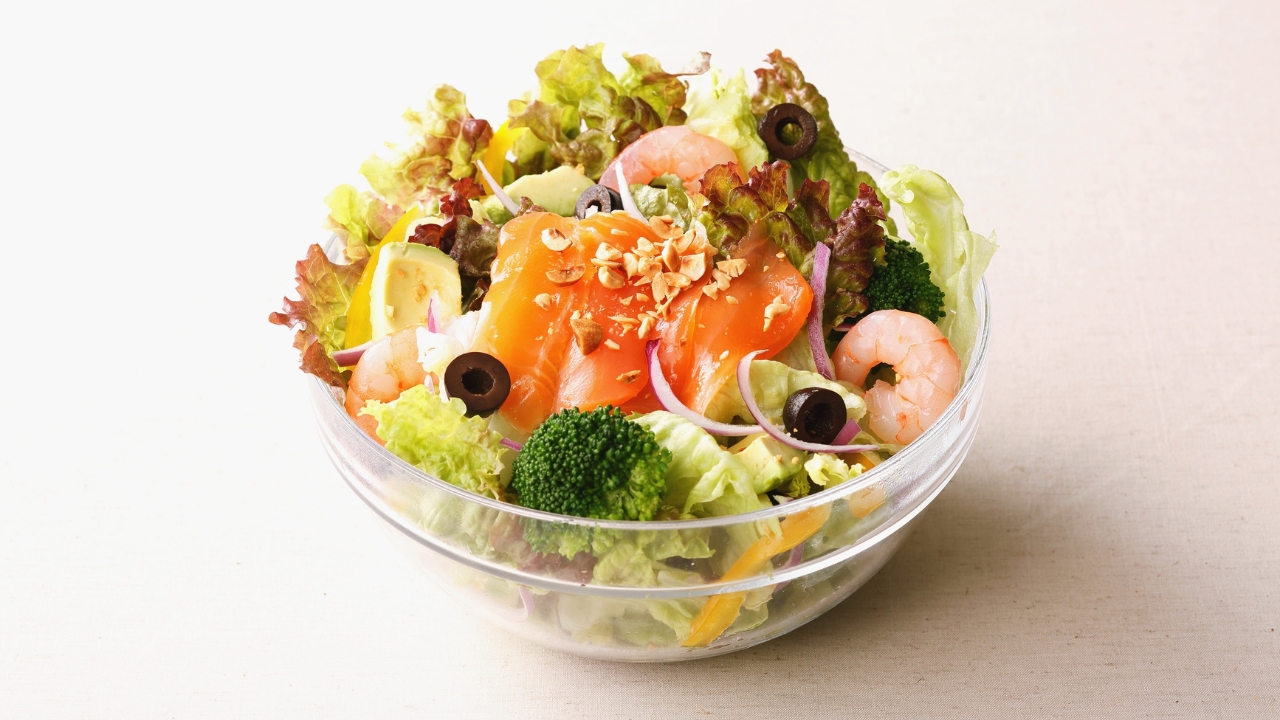Retirement diet hacks can help you stay energized, sharp, and feeling great every day.
Smart meal timing, nutrient-rich foods, and simple swaps make a big difference.
From boosting collagen naturally to using spices that fight aging, these strategies keep health on track without complicated rules.
Small changes lead to better digestion, steady energy, and stronger joints.
Eating well doesn’t mean giving up the foods you love—it’s about making smarter choices for a healthier, happier life.
1. Circadian Fasting: Eat with the Sun

Your body follows a natural clock, known as the circadian rhythm. Eating in sync with this cycle helps digestion, boosts metabolism, and improves energy levels. The idea is simple—consume meals during daylight hours and avoid late-night snacking. Studies show that eating earlier in the day enhances insulin sensitivity, making it easier to maintain a healthy weight.
Morning meals should be nutrient-dense to fuel the day, while dinner should be lighter to prevent sluggish digestion. Late-night snacks, especially high-carb or sugary foods, interfere with sleep and hormone balance. Those who shift to a daylight eating pattern often report better sleep, stable energy, and even reduced inflammation.
To start, try finishing dinner at least three hours before bed. Gradually adjust meal timing to align with natural light. Small changes in when you eat can have a big impact on overall well-being.
2. The 80% Full Rule (Hara Hachi Bu)

In Okinawa, a region famous for longevity, people practice Hara Hachi Bu—stopping when they feel 80% full. This habit helps prevent overeating, reduces stress on digestion, and promotes long-term health. Instead of eating until stuffed, they leave a little room, allowing the brain to register satiety naturally.
Modern research backs this practice, linking it to weight control and lower risk of metabolic diseases. Slowing down while eating, using smaller plates, and savoring each bite makes it easier to recognize fullness cues.
Drinking water before meals and focusing on fiber-rich foods further supports this approach. Over time, eating slightly less leads to better digestion, sustained energy, and improved overall health. The goal isn’t restriction—it’s awareness and balance.
3. Ditch Ultra-Processed ‘Senior’ Foods

Many packaged foods marketed to retirees contain hidden preservatives, excess sodium, and synthetic additives. These products promise convenience but often lack real nutrition. Heavily processed meals, instant oatmeal packs, and pre-made shakes may seem like easy choices, but they can accelerate aging rather than support vitality.
Fresh, whole foods provide far more benefits. Simple swaps, like homemade soups instead of canned versions or real yogurt instead of sugary meal replacements, make a difference. Cooking at home doesn’t have to be complicated—one-pan meals, batch cooking, or fresh salads offer quick and healthy alternatives.
Reading ingredient labels helps avoid unnecessary fillers and artificial ingredients. If a product contains a long list of unfamiliar additives, it’s best to look for a fresher option. Prioritizing real, unprocessed foods ensures better energy, digestion, and long-term health.
4. Color-Coded Nutrition

Eating a variety of colors isn’t just for aesthetics—it’s a simple way to ensure balanced nutrition. Different colors in fruits and vegetables represent unique vitamins, minerals, and antioxidants. Instead of counting calories, focusing on a colorful plate naturally supports better health.
Red foods like tomatoes and strawberries are packed with lycopene and vitamin C, supporting heart health. Orange options, such as carrots and sweet potatoes, provide beta-carotene for eye protection. Leafy greens like spinach and kale are rich in iron and magnesium, essential for muscle and bone strength. Purple foods, including berries and eggplants, contain powerful antioxidants that fight inflammation.
Aiming for at least five colors per meal ensures a broad range of nutrients. Even small changes, like adding blueberries to oatmeal or swapping white rice for quinoa, can enhance overall well-being. Eating by color is an easy and effective way to nourish the body without complicated diet rules.
5. Boost Collagen Naturally

Collagen keeps skin firm, joints flexible, and hair strong. As the body ages, natural collagen production slows, leading to wrinkles, joint discomfort, and brittle nails. While collagen supplements exist, real food sources provide the best long-term benefits.
Bone broth, salmon skin, and slow-cooked meats are rich in collagen-building compounds. Vitamin C from citrus fruits, bell peppers, and berries helps the body synthesize collagen effectively. Leafy greens and eggs supply essential amino acids that support production.
6. Reverse Aging with ‘Longevity Spices’

Spices do more than add flavor. Some contain powerful compounds that slow aging, reduce inflammation, and support overall health. Turmeric, rich in curcumin, fights oxidative stress and keeps joints flexible. Cinnamon stabilizes blood sugar and improves circulation. Black cumin, often overlooked, has been linked to improved immune function and heart health.
Adding these spices to daily meals is simple. A pinch of turmeric in soups or a sprinkle of cinnamon in coffee makes a difference. Black cumin seeds work well in salads or mixed with yogurt. Consistency is key—small amounts daily provide long-term benefits.
Freshly ground spices retain the most potency. Pre-ground versions lose their strength over time. Choosing high-quality sources ensures the body gets the maximum advantage from nature’s most powerful ingredients.
7. Make Breakfast Optional

Skipping breakfast might seem unconventional, but research suggests it benefits metabolism and brain health. Fasting for a few extra hours in the morning gives the body time to repair and burn stored energy. Many people feel sharper, more focused, and experience better digestion by delaying their first meal.
Those who aren’t hungry in the morning shouldn’t force a meal. Instead, sipping herbal tea or black coffee can support energy levels. When hunger naturally kicks in, a nutrient-dense meal with healthy fats and protein sets the tone for steady energy.
For those who prefer breakfast, keeping it simple works best. Eggs, Greek yogurt, or nuts offer lasting fuel without blood sugar spikes. Listening to the body’s signals matters more than following outdated meal rules.
8. Carb Timing for Energy and Sleep

Carbohydrates aren’t the enemy—timing them properly makes all the difference. Eating them earlier in the day fuels activity, while consuming them in the evening helps with relaxation.
Morning carbs should focus on fiber and slow-digesting options. Oats, whole grains, and fruit provide sustained energy without crashes. Later in the day, a portion of starchy carbs like sweet potatoes or quinoa can support serotonin production, leading to better sleep.
Avoiding processed carbs and sugar in the afternoon prevents sluggishness. Instead, choosing natural sources like legumes, brown rice, or root vegetables keeps blood sugar stable. Adjusting carb intake based on activity levels helps optimize energy throughout the day.
9. The ‘Smart Fat’ Trick

Not all fats are equal. Some nourish the brain and heart, while others contribute to inflammation. Hidden trans fats and low-quality vegetable oils lurk in processed foods, silently impacting health. Replacing them with the right sources improves memory, skin, and overall well-being.
Avocados, extra virgin olive oil, and nuts offer essential fatty acids the body needs. Fatty fish like salmon and sardines supply omega-3s that support cognitive function. Cooking with ghee or coconut oil instead of refined seed oils makes a noticeable difference over time.
Checking ingredient labels helps identify hidden bad fats. If an item contains hydrogenated oils, skipping it is the best choice. Making simple swaps leads to better long-term health without drastic changes.
10. Hydration Beyond Water

Plain water is essential, but other hydrating options offer additional benefits. Coconut water replenishes electrolytes naturally, making it a great choice after physical activity. Herbal teas soothe digestion while providing antioxidants. Bone broth supplies minerals that support joints and gut health.
Eating water-rich foods also contributes to hydration. Cucumbers, melons, and leafy greens contain high amounts of water, along with vitamins and fiber. These foods help maintain hydration levels without needing to drink excessive amounts of plain water.
Avoiding sugary sports drinks and artificial flavored waters prevents unnecessary additives. Choosing natural hydration sources supports overall health while keeping things simple and effective.


